De Nederlandse versie van dit essay staat hier.
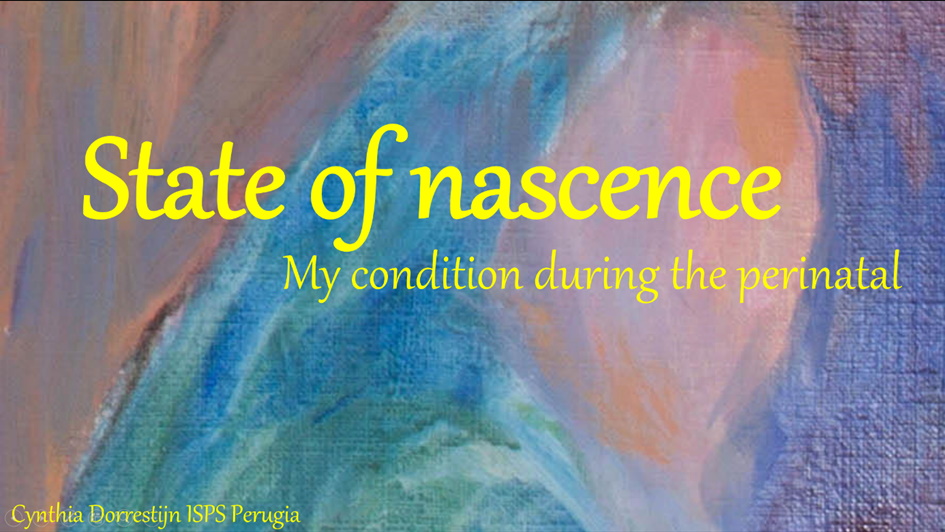
In the background, you can see an unfinished part of a painting of my mother. She wanted to depict a woman. I will come back to the shaping of this woman at the end. You’ll have to endure watching this unfinished painting.

I experienced psychosis three times in my life before becoming a mother for the first time. I wanted to become a mother. I recognised that it would put me at risk for another psychosis. My husband and I sought counselling and thus came into contact with a specialist psychiatrist. ‘A puerperal psychosis, you want to avoid that at all costs, don’t you?’ he asked. He advised me to take preventive lithium and to get a room among the psychiatric patients in the hospital directly after giving birth. However I wanted to be receptive to what was to come and cocoon myself with familiar faces and the atmosphere of home[1]. In cooperation with my self-employed psychiatrist, my husband and I organised effective extra care and support at home. Fortunately, childbirth and the postpartum weeks passed without falling ill. I am glad that I had not chosen the supposedly ultra-safe route to motherhood since it radiated fear from the medics.
According to my psychiatrist, fear is a major factor in determining whether ‘ordinary’ altered states of consciousness escalate into psychosis. He, together with my husband and the additional caregivers, created an atmosphere of trust during those first two weeks in which I was quite out-of-tune . Eventually the hallucinations faded away without medical intervention. Although I prefer not to call them hallucinations myself.
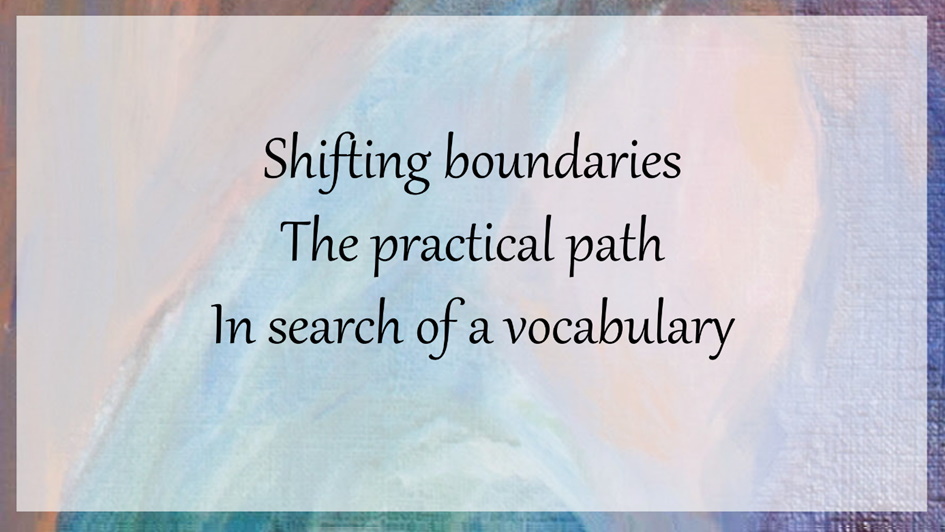
My maternal observations provide a glimpse into how I as a young mother have experienced shifting boundaries between ‘mine’ and ‘not-mine’. It has shaken up my assumptions about ‘inner world’ and ‘outer world’ in a way that I think is transformative and very healthy. In this presentation, I will show how boundaries shifted and what path I walked. Then I am going to relate and try to interpret my experiences, first in comparison with the ‘altered state of perception’ in ‘synaesthesia’, but ultimately in the framework of the philosophy of ‘atmospheres’ and ‘nascent state of perceptions’. Let me first illustrate with some strange sensations how ‘mine’ and ‘not-mine’ seem to shift during childbirth in my case.
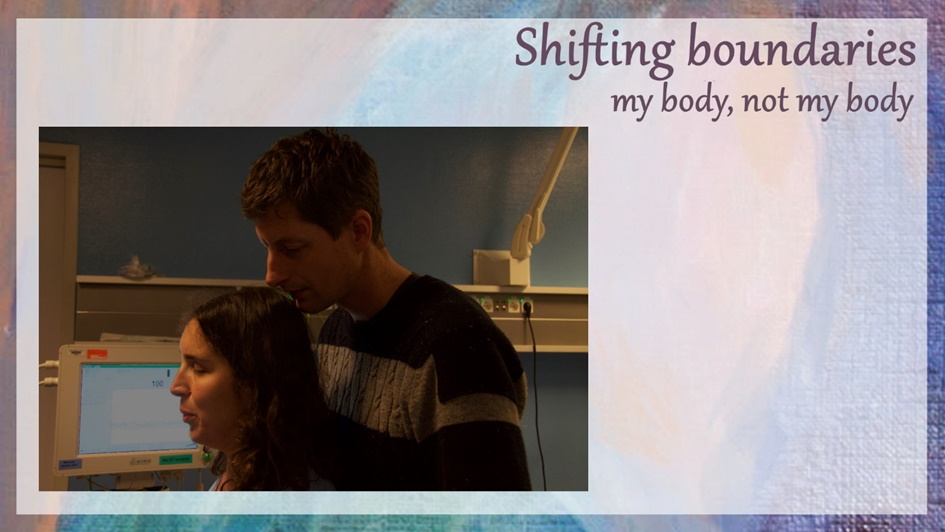
During contractions, I fell into a good sort of trance. I was one with my body and pain. Unfortunately, it was very busy at the ward when I was fully dilated. When I felt it was time to give birth I was told to: ‘hold back the contractions as long as possible’ and the medics left the room. As a consequence, I exhausted myself by breathing ‘up’ during the phase when labour pains reached their climax. I centred in my upper body as a counterweight to my lower body. There was no longer any question of ‘being my body’, at best I was one with my upper body. It was a battle of upper body and mind against the force of nature from below. When one could finally help with the delivery the contractions had subsided and medical intervention was required. Fortunately my son was born healthy.
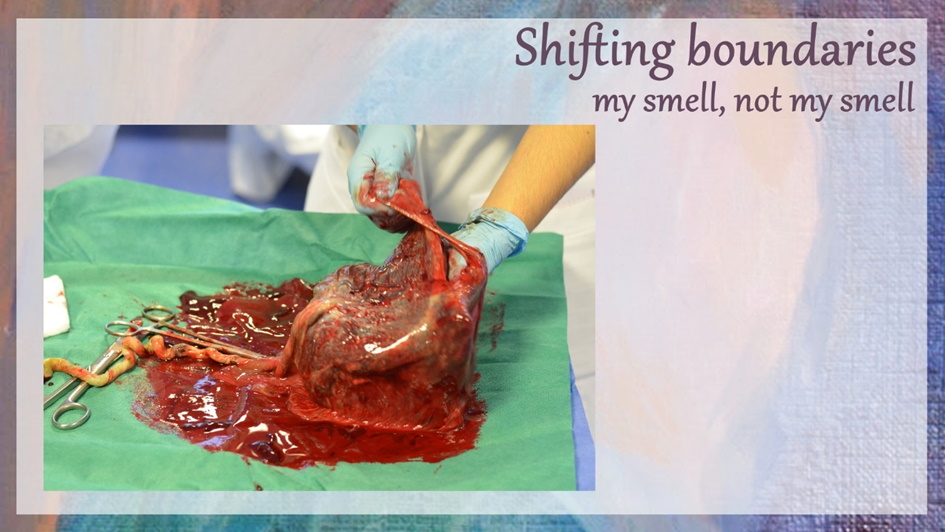
I strongly remember the smell after giving birth. A woeful smell, unpleasantly penetrating and all-encompassing like a whining false chord. I wondered where that smell was coming from. Later, when I told my doula, she was surprised. She had not had that aversion and, as always, she had just enjoyed the smell of childbirth. Smell of childbirth? My body’s odour then? My husband also confirmed that the smell came from my body. I had never experienced my body odour like that before. How could nausea be caused by a smell from within[2]? The amniotic fluid could clearly be attributed not only to myself, but also to my son. But shouldn’t I experience my son as part of myself? Maybe the cause was different. I had also felt more and more distance to my lower body. Had I perhaps become dissociated? And yet. The smell was unmistakably coming from my body. I found it very confusing.

In the postpartum period of my second son, I had an opposite experience when it came to excretion. The smell of the breastfed baby’s stools during the day was so similar to the smell of my own stools that at times I ascribed it to my own body. I experienced that something I would call ‘mine’, namely my digestion, partly took place outside my body. This synchronisation gave me a sensation of ‘being expanded’.
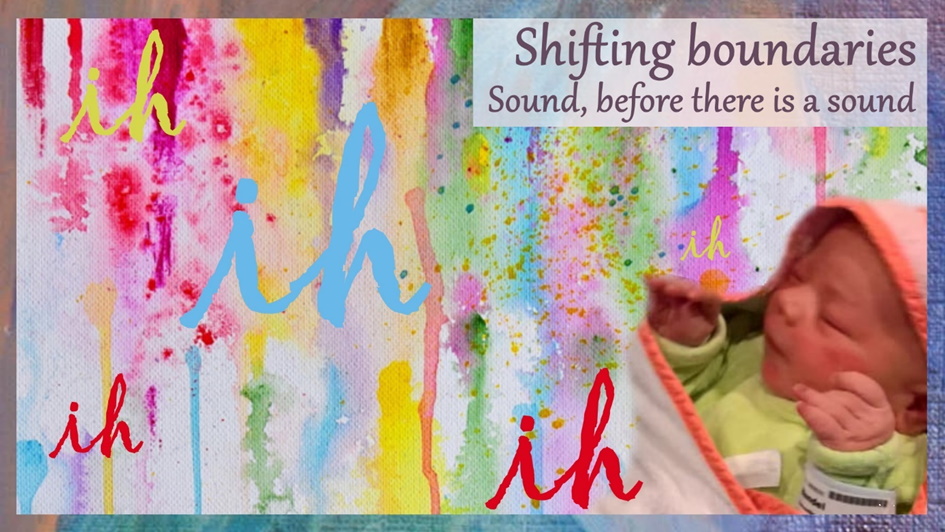
Not only smell, but also sound sometimes seemed indeterminate. For example, I detected a sound before I could identify a mouth as the source. There would be a temporary ‘ih’ cloud in the air, and it would permeate the people in the room in multiple ways. The baby would make ‘ih’ sounds for example. And the maternity nurse would coo with ‘ih’ sounds. In general I noticed an excessive amount of ‘ih’ sounds in other people’s conversations.
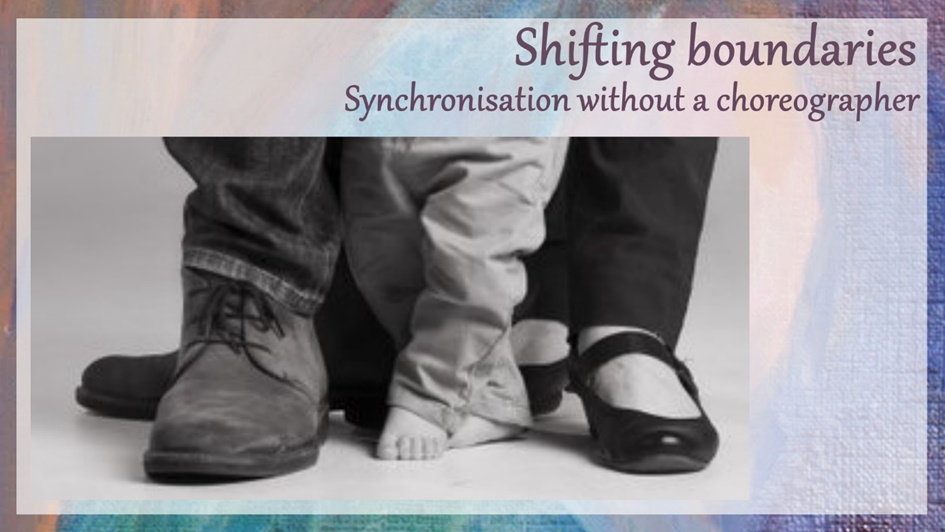
Movements seemed to be waiting ‘in the air’ in the same way, with the result that movements, including my own, were sometimes amazingly synchronised, as in a dance. There seemed to be so little coincidence that in a psychotic state I would have probably wondered who the choreographer of all this was.

I was regularly in despair, for example because of breastfeeding. It had a nasty side effect…
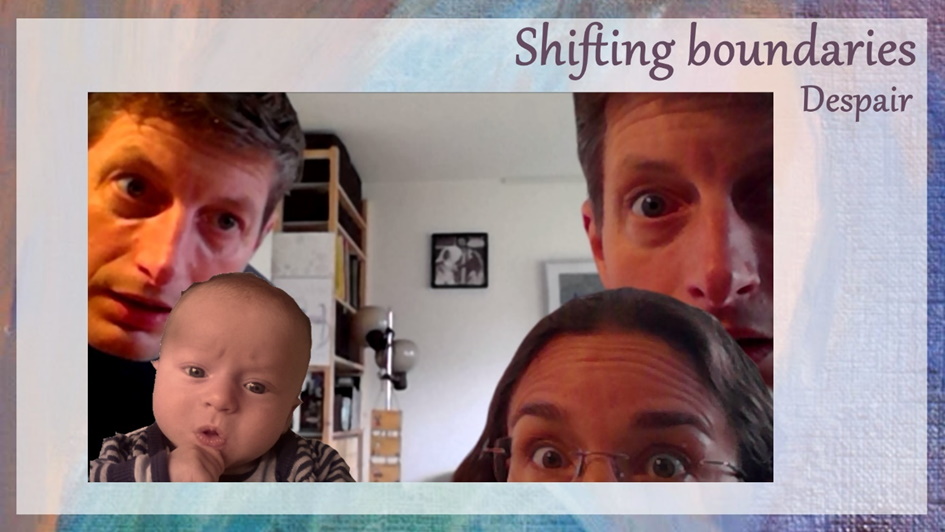
With the accompanying facial expression popping up everywhere, despair also seemed to be ‘in the air’. Continuing to breath in that cloud of despair was unsettling and perhaps the most challenging sensation. I needed an external counterweight to change that cloud.
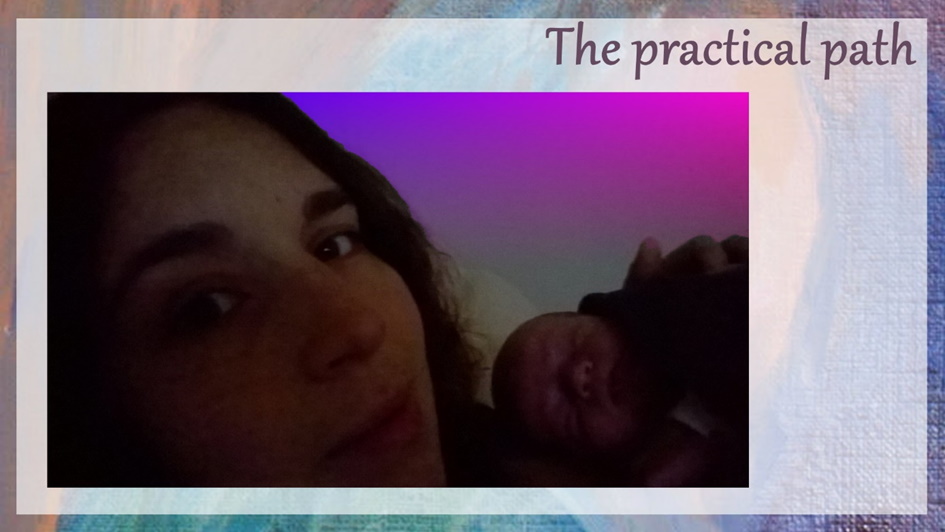
The visit of my psychiatrist came at just the right time to counter that unsettling feeling. Very fatherly, he sat down next to my bed and spoke with great appreciation about motherhood. He saw how hard breastfeeding was and how restlessness kept me awake. That’s why he suggested a ritual. We would end the evening the next day with a relaxing glass of brown beer. He joked that it was also good for the breastfeeding. Furthermore, he instructed me to focus on the day-to-day tasks and actions of motherhood: changing nappies, feeding and bed rest. And, the most important message, ‘you’ll be fine, the next few days’.
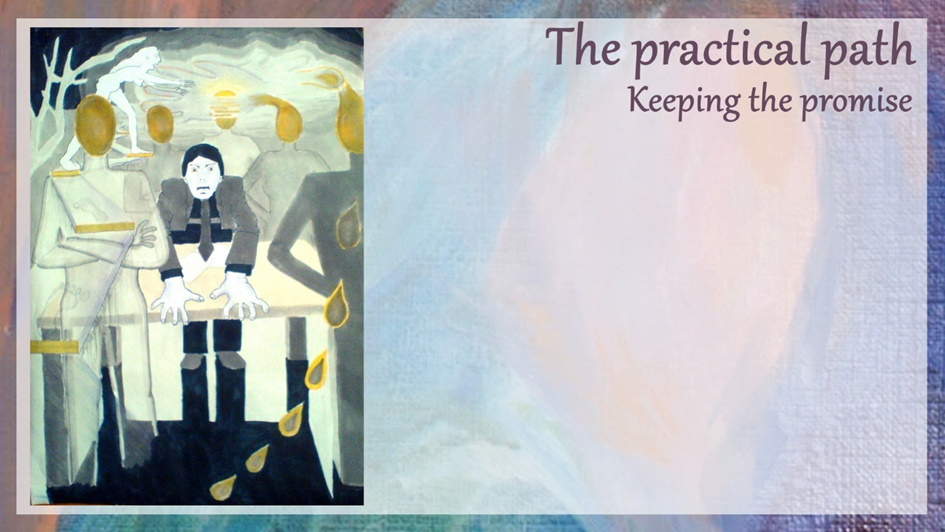
With these messages, I walked for the next two or three days through a valley of strange and sometimes scary perceptions. One night I could not resist the temptation to take the path along which I could find the insights of the third psychosis. A path that is not accessible in normal circumstances, but which now stretched out before me in all its glory. One insight after another came back to my mind. If I turned around, I would have forgotten the insights the next day, I knew. The temptation was great, but I reminded myself of my promise to walk the practical path and so I turned around and left the path full of insights. All that was one night. One night I lay awake and wandered in a valley of half-dreaming, half-waking.
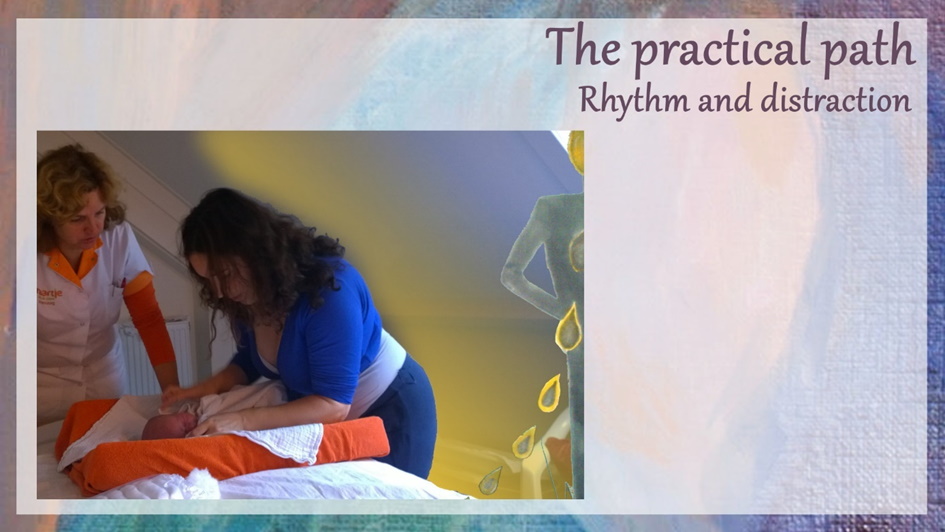
The next day, there were still remnants of meaning in the air. My husband, however, reminded me of everyday actions. And the rhythm of the day pushed the nightly Aha experience into the background. The daily actions made it impossible for me to focus on those scraps of meaningfulness. Fortunately. Supported by my maternity nurse and husband, I rolled from one task to another.

We took our first walk outside, something the psychiatrist told us to do every day. Around me I saw distorted faces. I tried to just ‘let it be’, although the sight made me very uneasy. Meanwhile I listened to my husband, who was pointing out the surroundings. He alerted me to unusual cars, strange trees and more. That helped, that calmed me down. This restless and open state of being lasted for a few days.

Keeping an anxious mood at bay was not always easy. Once, my husband almost had it too hard. One evening, I stepped out of the darkness into the living room, sleep-deprived. The lights were on brightly, the exhaust was roaring, the television was loud and the room was filled with the smell of red cabbage. With astonishment I observed how everything was taking shape. The cat looked at me questioningly with unusually large eyes. The screen showed a talking head, but like a faltering Zoom session, the image slowed down and then speeded up. There was an intense glow in the room. Light-headed, I waddled over to the dining table and told my husband about my observations . He tried not to let on that he was startled.
We made it a festive meal and went into the night in good spirits. With brown beer. There was a rhythm those days, and the hallucinations faded away unnoticed. The struggle to keep breastfeeding going resolved effortlessly, as the milk supply stopped on its own after a week and a half. I cried a lot about that and was well supported. It was only around that time that I noticed the hallucinations had gone. While on full bottle feeding, the baby’s stool smell changed to something I could identify as a separate smell. As our digestive systems went out of sync, I felt more clear boundaries. And from then on I was better able to safely leave my cocoon and go out more often.
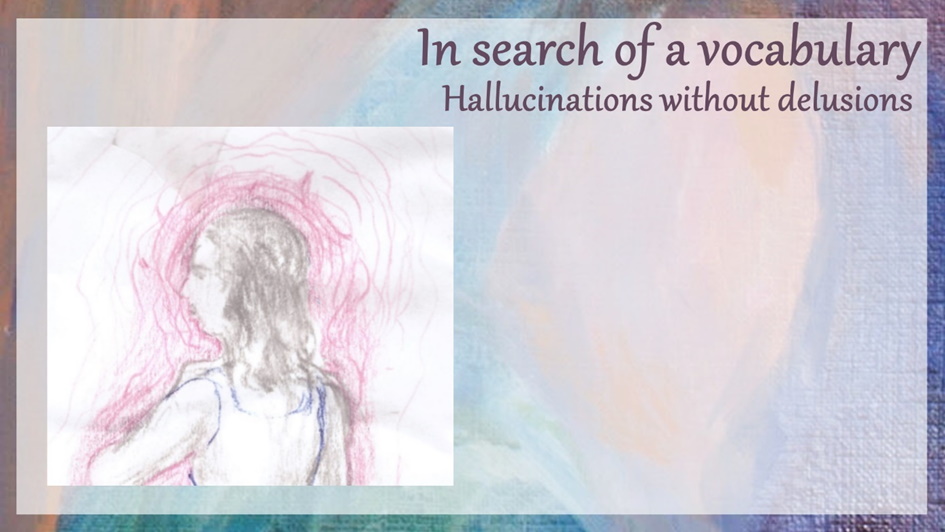
I found the maternity time very intense and needed to find others with similar experiences. However, I lacked a vocabulary. I had never known the horror of ‘puerperal psychosis’, but I could not talk about the ‘hallucinations’ because I was afraid of being called mad retroactively. Even before the birth I had already experienced that not all special perceptions need to be frightening. One could have hallucinations without delusions. The postpartum period confirmed to me that an altered perception does not have to be pathological. I started looking for other concepts.
More than once, I was confused about ’the origin’ of an observation. The sound that was in the air, the smell of the baby’s stool that seemed to be mine, etc. The shifting of the boundary between ‘mine’ and ‘not-mine’ seems to underlie this, with the baby playing a major role. During the maternity period, it was usually unclear whether the onset of these sensations was to be found in myself or in the baby. Every time I thought I had a grip on my situation during the maternity time, it changed again. That sounds like extra turmoil, but it had an advantage.
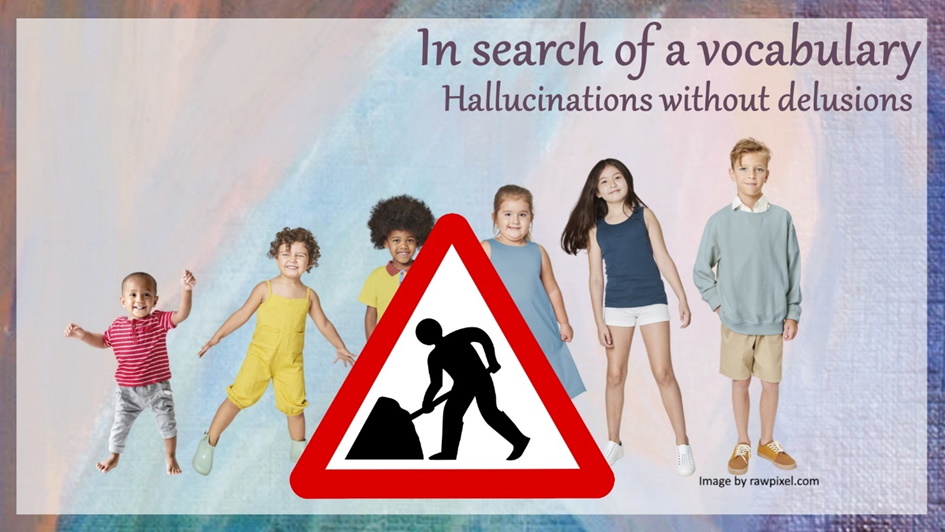
When I think of the social landscape preceding the three psychotic episodes, I know that I perceived this landscape as being static and immovable. It felt hopeless and thus, the agitation concerning aura’s and other altered perceptions became more and more intense. Delusions gave peace and had free play to unfold. In my case, I guess that the constantly changing maternity situation inhibited static delusions from to building up.
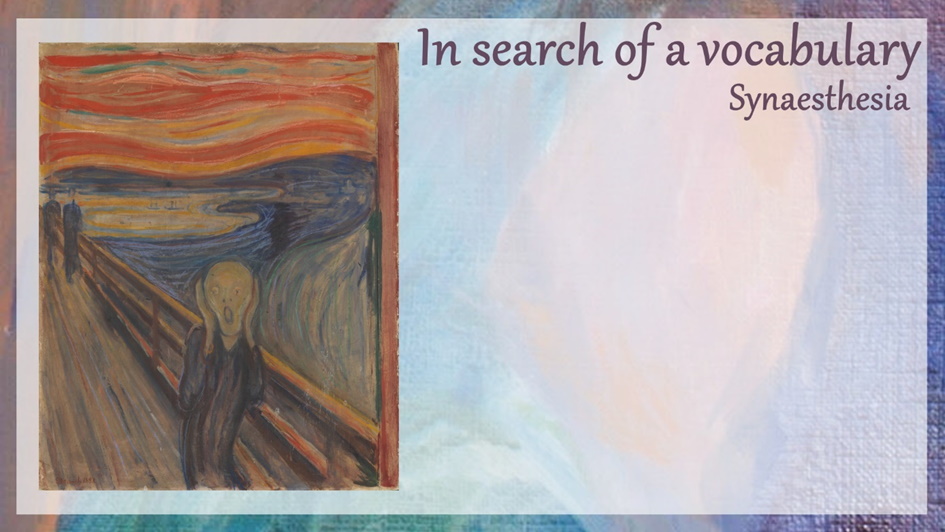
Searching for other explanatory models, I came across synaesthesia; an abnormal form of perception in which one or more senses unintentionally resonate with other senses. A phenomenon that often occurs among artists. The vibrating skies of Vincent van Gogh, for example, could be attributed to a form of synaesthesia. Synaesthesia can also be overwhelming. As in this painting of Edvard Munch, the outside world can shout at the artist without others noticing. In this example, however, it is the external visual outside world that influences the external auditory outside world. The foundation of the inner world would not falter. It would remain clear what is ‘mine’ and what is ‘not-mine’. For years, I have considered this to be the distinction between a synesthetic experience and a hallucination. If there is clearly something of the inner world that helps shape the involuntary secondary sensory input, then you could call it a hallucination I had once thought before I became a mother. However, that boundary between ‘mine’ and ‘not-mine’ was not a strict one for me during pregnancy, labour and postpartum. If a hallucination were a combination of synaesthesia and interference from the inner world, I guess many healthy ‘synesthetic’ women giving birth would experience hallucinations. That’s why those neurological concepts of synaesthesia and hallucination didn’t work for me.
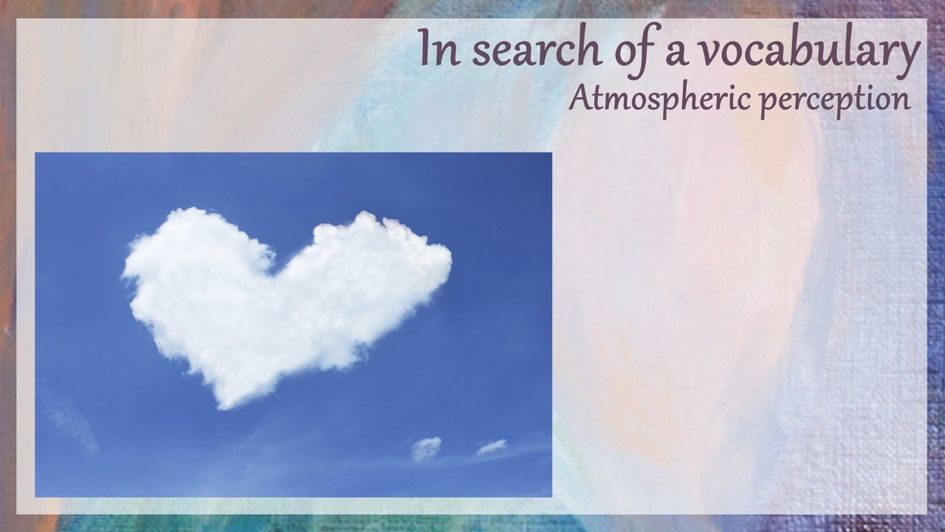
Eventually I came to the German philosopher Hermann Schmitz (1928-2021) and his neo-phenomenological approach. With Schmitz I found the concept of ‘atmosphere’, which I found easier to work with. He also uses the term synaesthesia but defined it very differently from what is usual among neurologists. Gianni Francesetti builds on his work. According to Francesetti, synaesthesia is an essential part of all experiences. He distinguishes different stages in the process of the realisation of an experience. Every perception starts with atmospheric perception. According to him, you first ‘feel’ this atmospheric perception before you can name it. Schmitz even claims that ‘feelings’ are not innerworld matters![3] His most famous example is that of ‘panic breaking out’. This is an atmospheric matter that does not clearly feel either arising from the inside or from the outside. Such atmospheric perception precedes an experience of inside and outside. Only later in time does it break down into what someone thinks they feel inside and what they think to get as input for the separate senses. Only then a subject-object distinction arises. According to Schmitz, the world does not present itself from the outset in, for example, separate images and sounds.
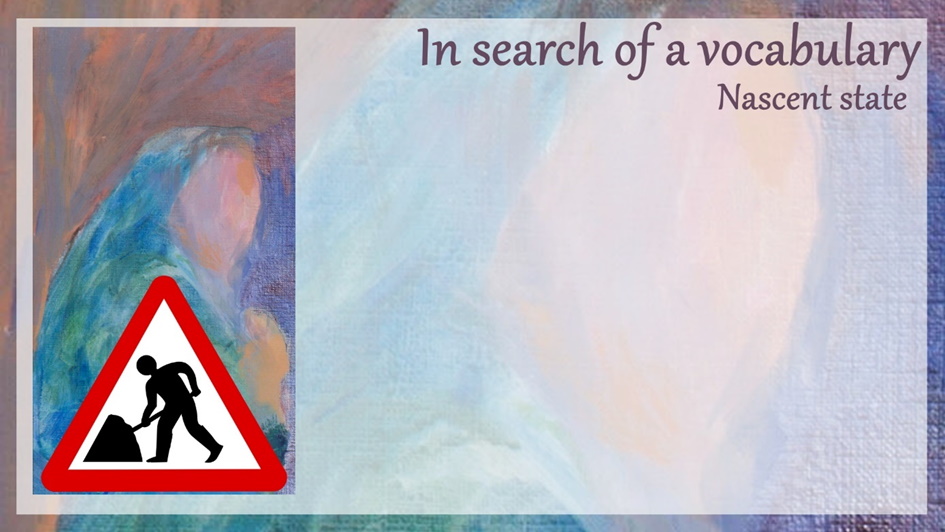
Gianni Francesetti describes the above process in detail and calls it the ‘Gestalt analysis of perception’[4]. He emphasises that people in the ‘natural attitude’ (a term from Husserl) are not aware of these preliminary stages. On the other hand, he leaves open the possibility that one could experience this process somewhat consciously. According to him, you can then justifiably call it an ‘altered state of consciousness’. He calls this state the ‘nascent state of perception’. I read Francesetti’s analysis as a feast of recognition.
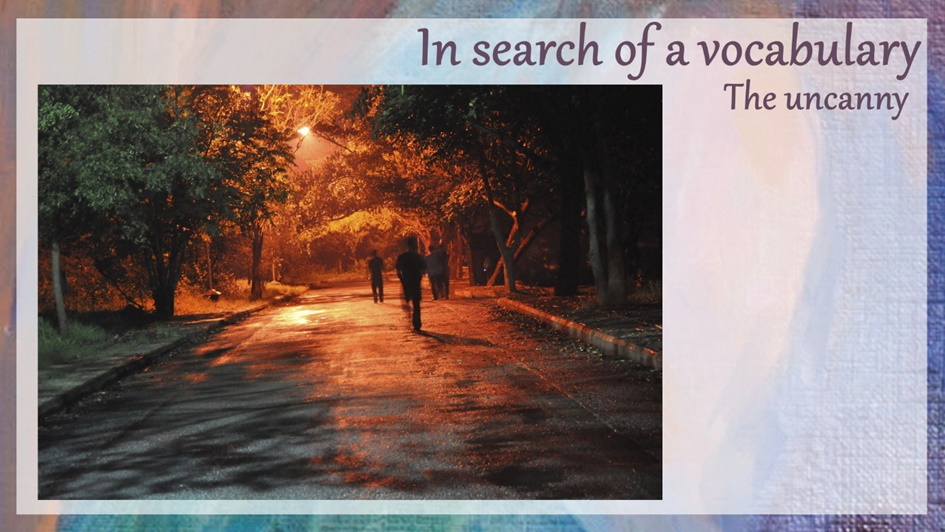
He relates this state of being to the preliminary stage of a psychosis by advancing Fuchs and his exploration of the ‘uncannyness’ (Unheimlichkeit). For example, my experience of the ‘ih’ sound all around me could have unsettled the rational principle of ‘coincidence’, giving the world a strange meaningful glow. But it did not. Indeed, the ‘uncannyness’ can only develop from the cognitive dissonance that arises from the discomfort with the irrationality of the experience, of the person living it, or of bystanders. Fortunately, people are often understanding about irrationality during the maternity period. Likewise during my maternity time. I dryly named my experiences, people nodded, and we went on with our everyday activities. My husband and psychiatrist subtly encouraged the latter. It was part of my psychiatrist’s plan to keep my feet firmly on the ground. The phenomenology of atmospheres offers me a framework within which there need be no fear or mysticism in an altered state of consciousness. At times the world was so intrusive that I wanted to turn away from it, especially in the moments of distorted faces, or I found it so fascinating as in that one night that I wanted to make that mystical journey.
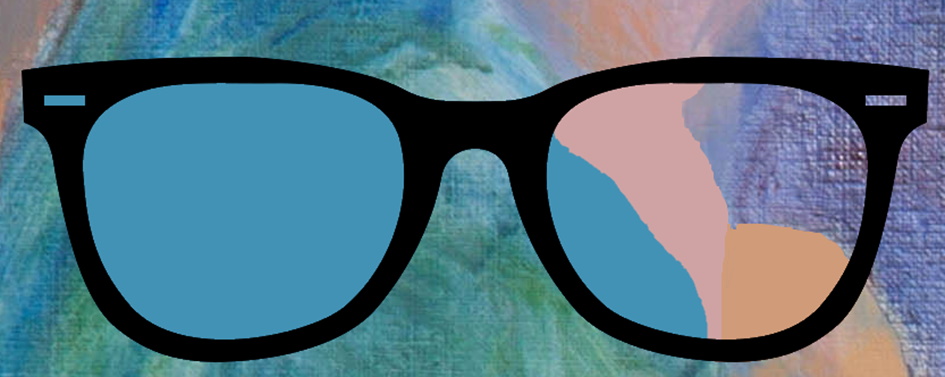
Let’s go back to the journey of finishing this painting. You have endured watching an unfinished painting in the background for a long period of time now. My mother felt that the process would not complete itself by simply defining shapes the normal way.
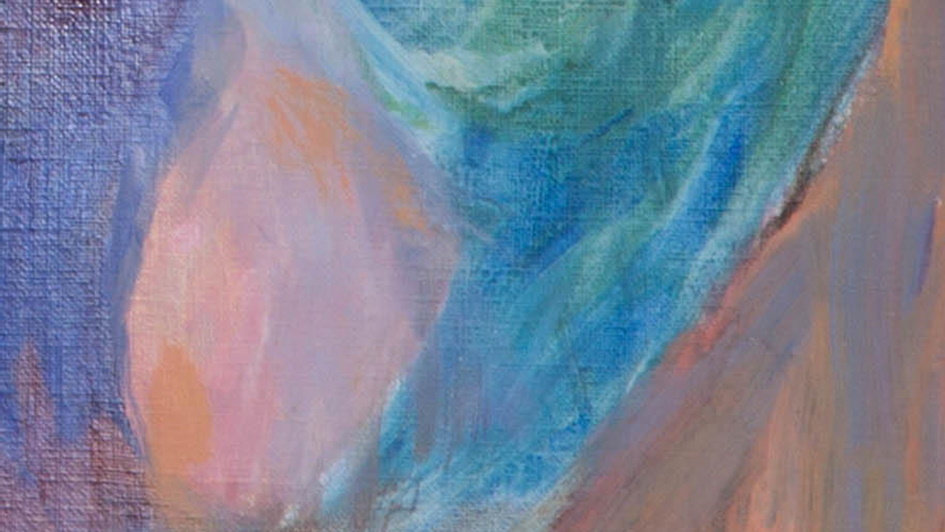
So she turned the painting upside down.
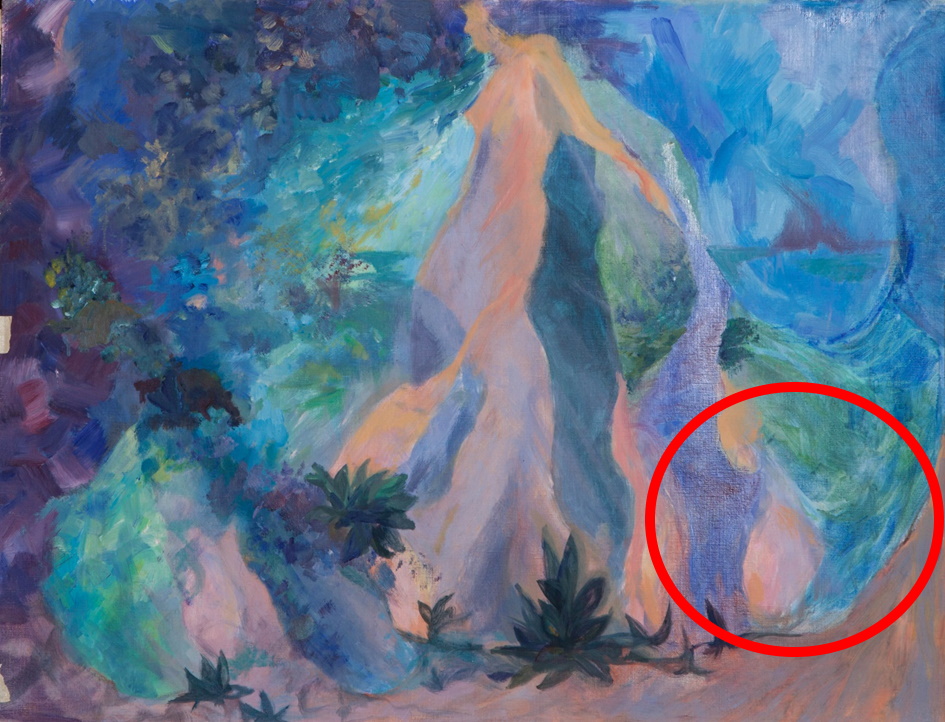
The woman of the initial painting (positioned in the red circle) had to undergo this transformation to match the mental image of my mother. Background and foreground shifted, the world was upside down, but if you look carefully, you see this Gestalt (shape) of a new woman in the centre of this painting.
I think in my case, the trick was to endure. If there is a nascent state of perception, then it is possible to wait until that birth is complete and new good and strong forms have risen from the diffuse atmospheric initial stage. However, my new attitude as a mother could only crystallise by the grace of the baby’s presence. In this sense I did not depersonalise, but underwent a metamorphosis (‘matrescence’, or ‘mamamorphosis’). Because of the spherical sensitivity in those days, this was only possible in the right context. That is why I am grateful to all the caregivers of that time. I had a good maternity time.
The crossing to motherhood could never have taken place in this way if I had followed the hospital’s patient protocols. In my opinion, the message I received during my pregnancy that ‘you want to avoid psychosis at all costs’ is an unbalanced message that does not do justice to the healing potential of a well-supported matrescence.
[1] In the Netherlands, women traditionally go home just a few hours after giving birth. For the first two weeks after birth, a maternity nurse helps the family a couple of hours a day. In my situation, we also employed a social worker for a finger on the pulse.
[2] This kind of confusion is said to also occur during pregnancy when confronted with nausea. For the role of nausau in phenomenology of pregnancy see: Flakne, A. (2016). Nausea as interoceptive annunciation. J., Bornemark, N. Smith,(Eds.), Phenomenology of pregnancy, 103-118.
[3] Schmitz, H. (2015). Der Leib, der Raum und die Gefühle. Verlag Aesthesis. For a description on the internet, see for example: Gefühle als Atmosphären (Hermann Schmitz) | Denkstil (bankstil.de)
[4] Francesetti, G. (2019). CHAPTER TWO A CLINICAL EXPLORATION OF ATMOSPHERES: TOWARDS A FIELDYBASED CLINICAL PRACTICE GIANNI FRANCESETTI. Psychopathology and Atmospheres: Neither Inside nor Outside, page 40. All of the references to Francesetti are on the basis of reading this article. (p35-68).
